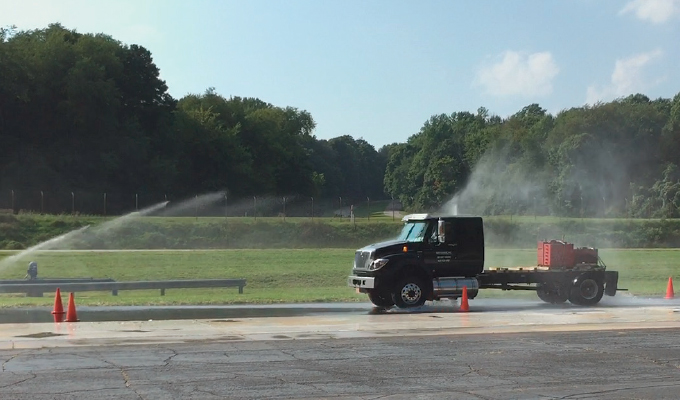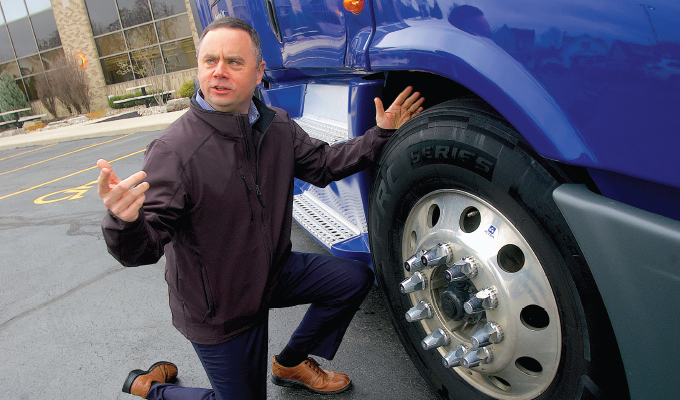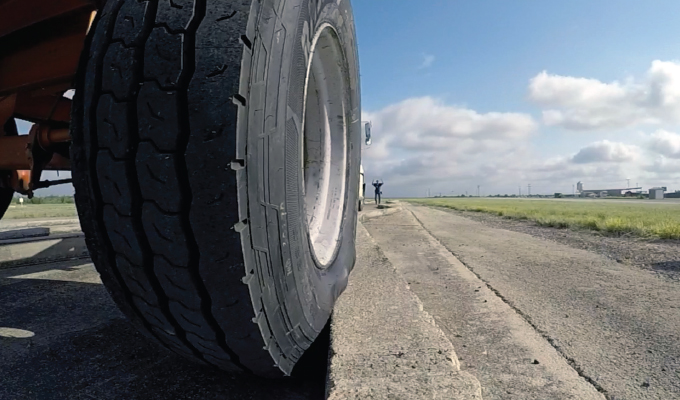For Phil Mosier, Cooper Tire’s manager of commercial tire development, it’s only when he hears the words, “When can I buy these tires?” does he know new tires in development are ready to go to market.
“Engineering and bringing to market a new tire has a lot of stages, but the ultimate moment is when our customers, who have seen us testing and validating our tires against their current tires, can’t wait to start placing orders,” Mosier says. “That validates our performance in real-world conditions. It’s the proof in the pudding, and fleet managers see first hand how our tire performs as we gather data. So when they get excited and want to buy our tire after the test is complete, it validates even further that we’ve hit a homerun.”
According to Mosier, by the time a new tire hits the market, it has passed multiple layers of developmental, design, and on-road testing—not to mention government verification so that the tire will meet or exceed customer expectations. “For a product that looks simple in nature, it’s not simple to produce,” Mosier explains.
“In the lab, our tire engineers look for innovative ways to enhance previous tire models or develop an entirely new tire,” Mosier says. “With the help of computer modeling and other technology, we’re able to test new tire designs to see if we’re on our way in developing a breakthrough design. It allows us to test theoretical performance and gain surface-level insight into a tire’s predicted performance. We can also test new compounds in our compounding lab to see how they might perform and hold up over time. But, that’s just the start.”

TO THE TESTS
Once a design is deemed “test ready” and prototypes are made, Cooper takes to a commercial test track to get a glimpse into the tire’s real, on-road performance. Through track tests, engineers evaluate a tires’ performance in a controlled environment. The track features obstacle courses and is designed for engineers to put heavy miles on tires by running around-the-clock tests for the tread and sidewalls. This test proves grip, durability, and chip/chunk resistance.
While track testing provides engineers with the information they need to see how the prototypes perform, they also allow for benchmarking competitive tires. The data collected is a barometer—a forecast of future performance. But, to ensure accuracy, Cooper moves from the track to the road.
To see the true performance of new tires, Cooper relies on fleets to test their tires in a variety of road conditions. “And, the fleets we choose for tire trials are typically ones that make runs on North America’s toughest roadways,” Mosier says.
“We select trucking companies that we believe will push our tires to the limit. Our tires need to prove they can handle harsh conditions. When we trial our over-the-road tires, we look for a mix of fleets operating in all conditions—cold and snowy, mild and wet, hot and dry—pretty much any driving condition you can think of. We’ll fit our tires with customers that operate in construction, package delivery, utility, and other industries that are notoriously tough on tires to see how the tires fare over the course of a trial. We want our tires to prove that they can handle any terrain a customer of ours may face so that there are no surprises come production time.”

TO THE FLEET
During trial runs, Cooper Tire will fit multiple trucks in a fleet and run similar routes with the same average miles per month. “Often times we will be evaluating multiple variations of a new tire design—there may be different compounding for example, but the same tread design. We may love the durability characteristics of one tire, yet the performance of another. We’ll then go back to the lab to fine-tune development. From there, we’ll then do another round of field testing to see where we stand.”
To ensure field tests will result in fair and accurate results, Cooper works with fleets that prioritize their maintenance programs.
“It’s essential to work with companies that are on top of their trucks’ maintenance,” Mosier explains. “If a truck is out of alignment, we’ll see uneven tire wear, and the test won’t be accurate. To make sure the trial is going accordingly, we’ll meet with the fleets regularly to receive feedback from the company, check the tires to see how they wear, what the tread life is, as well as a number of other factors to see how they’re performing.
“When we examine our tires, we’re looking for anything that appears to strike out as irregular or issues we notice that are common across the tires tested,” Mosier says. “If for example, a fleet experiences issues with cuts in their tire, it’s back to the lab to improve the tires’ cut-chip-resistance.
“For us, it’s important to be highly critical of our tires. Not only do we compare our new tire design to its predecessor, we also see how it stacks up against Tier 1 tires. We’ll often bring in our competitors’ latest tires to see how we measure up. We need to be confident that our tires will perform up to high standards and our testing processes play an instrumental part in affirming our confidence.”
FOR MORE INFORMATION
Cooper Tire’s Global Technical Center deploys tire science and technology around the globe. The Center works toward the continuous improvement of Cooper tires as well as conducts performance and durability at its testing facility. Find out more about Cooper Tires, visit www.coopertrucktires.com.




